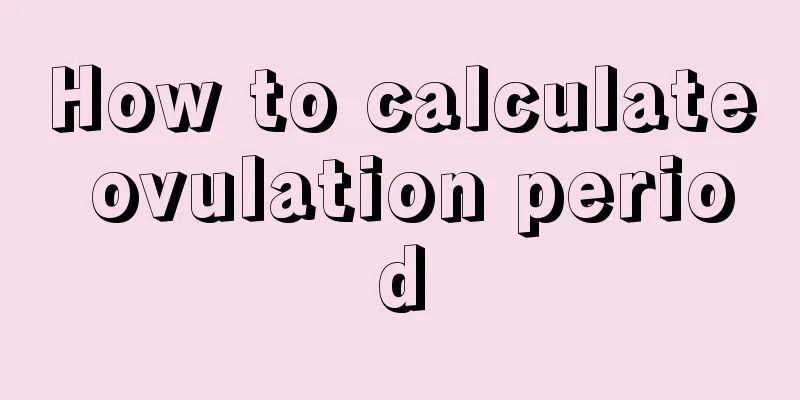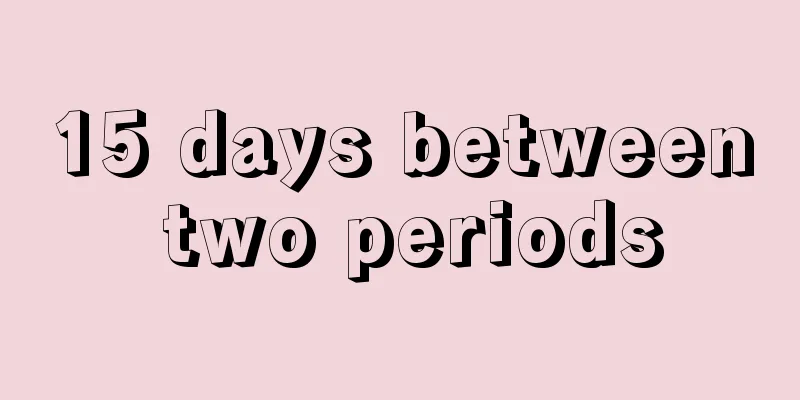How to calculate ovulation period

|
Women have menstruation and ovulation days every month. Calculating the ovulation period not only brings convenience to women who do not want to get pregnant, but also provides women who want to get pregnant with an accurate date for easy pregnancy. Therefore, it is very necessary to calculate the ovulation period. In order to bring benefits to the majority of women, let me introduce to you how to calculate the ovulation period. Such a serious matter must be kept in mind. There will always be a time when it will be useful, and I hope it can be helpful to my female friends. For women with irregular menstruation, the date of ovulation may be difficult to grasp. Generally, the easiest way is to find out the date of ovulation by measuring basal body temperature. The correct way to measure basal body temperature is to start measuring it orally in bed after waking up every morning without doing any activity. After measuring, mark your daily body temperature on the temperature sheet until it rises by 0.5 degrees compared to the previous day and lasts for three to five days. The day when the temperature rises may be the day of ovulation. If a woman has a normal menstrual cycle, the day of ovulation is actually relatively fixed. It should be about 14 days before the next menstrual period. For example, if this period is on March 5th, and the next period may be on April 5th, the ovulation day may be around March 20th. [Commonly used methods for calculating "ovulation period"] 1. Cervical mucus observation method (must be done in the hospital). 2. Basal body temperature measurement method. That is: the basal body temperature is the temperature measured when the body wakes up after a long period of sleep (usually in the early morning) and before any activity or speaking. Under normal circumstances, the basal body temperature of women of childbearing age is lower in the first half of menstruation and even lower during ovulation. It may suddenly or slowly rise by 0.3-0.6℃ within 24 hours to a few days after ovulation. Therefore, it is best to measure basal body temperature from the first day of menstruation, measure it every day, and record it on coordinate paper for observation and analysis. 3. Method for calculating menstrual date. That is: It is believed that each ovulation should occur about 14 days before menstruation, so the 5 days before ovulation to 5 days after ovulation is called the "ovulation period". However, this method is less reliable because most women have irregular periods. In comparison, the first two methods are more reliable, but somewhat troublesome. Here we introduce you to a simple and more reliable calculation method, hoping it will be helpful to you. The calculation formula is: First day of ovulation = the number of days in the shortest menstrual cycle minus 18 days The last day of ovulation = the longest menstrual cycle minus 11 days Before using this formula for calculation, the individual is required to observe and record his or her menstrual cycle for 8 consecutive times to obtain the longest and shortest number of days in his or her menstrual cycle. The numbers obtained by substituting them into the above formula represent the beginning and end time of the woman's "ovulation period" respectively. (The menstrual cycle is calculated from the first day of the current menstrual period to the first day of the next menstrual period) For example, the longest menstrual cycle of a woman of childbearing age in the first 8 months is 30 days and the shortest is 28 days. Substituting the formula into the formula is: The first day of ovulation = 28 days - 18 days = 10 days The last day of ovulation = 30 days - 11 days = 19 days That is: this woman’s "ovulation period" starts on the 10th day of this menstruation and ends on the 19th day of this menstruation. If you observe that your menstruation is very regular: once every 28 days, then you can set the longest and shortest days of your menstrual cycle to 28 days. Substituting them into the formula, you can calculate your "ovulation period" as: day 10-17 of this menstrual period. This calculation method takes the first day of the current menstruation as the base point and counts the days forward, rather than taking the next menstruation as the base point and counting backwards, so it is not easy to make mistakes. After finding out the "ovulation period", if you want to get pregnant, you can start from the first day of the "ovulation period" and have sexual intercourse every other day for several months, and you are very likely to get pregnant. If you don’t want to get pregnant, you have to miss the “ovulation period” to have sex. The method of calculating ovulation has been introduced to everyone, and this is based on scientific evidence. The ovulation period of a woman can be calculated based on her physiological characteristics. Of course, nothing is absolute. Sometimes due to physical or environmental reasons, a phenomenon may occur, that is, inaccurate ovulation period, so it is better to be cautious. |
<<: Can pregnant women eat carambolas?
>>: What to do if you have bloating in your stomach two months pregnant
Recommend
"Early death, early reincarnation": Here's a trick to stop procrastinating
Author: Sun Hailong Shen Sichu The article comes ...
A 34-year-old foreign man often suffers from visual fatigue due to high hyperopia
"I really don't want to wear glasses any...
What if my period is dark brown when it first comes?
I believe that many boys do not know at the begin...
What should pregnant women do if they have bloating and hiccups?
In life, many people suffer from bloating and bur...
If you have gallstones and experience right upper abdominal pain after eating greasy food, be careful of acute cholecystitis!
Author: Guo Shubin, Chief Physician, Beijing Chao...
Diet therapy for uterine fibroids and ascites
Generally speaking, the presence of uterine fibro...
How to make a woman wet
Both men and women want the woman's vagina to...
Can I have a child if my menstruation is normal?
Everyone knows that before getting pregnant, you ...
Is it normal for breasts to stop growing at 10 weeks of pregnancy?
Women are in the early stages of pregnancy when t...
What is a woman's body temperature during ovulation?
Many women know that they can use body temperatur...
Why is Guangxi sugarcane so sweet? What is the price of Guangxi sugarcane in 2019?
The price of sugarcane in Guangxi is between 480 ...
What to do if there is inflammation after curettage? Active prevention is the key
There are many inflammations that may be caused a...
What does induction of labor intervention mean?
What does induced labor mean? Induced labor means...
What are the symptoms of bacterial vaginosis?
Vaginitis is everywhere. In my country, 60% of wo...
What is the reason for the lower abdominal pain two months after delivery?
Is everything fine after giving birth? Actually, ...









